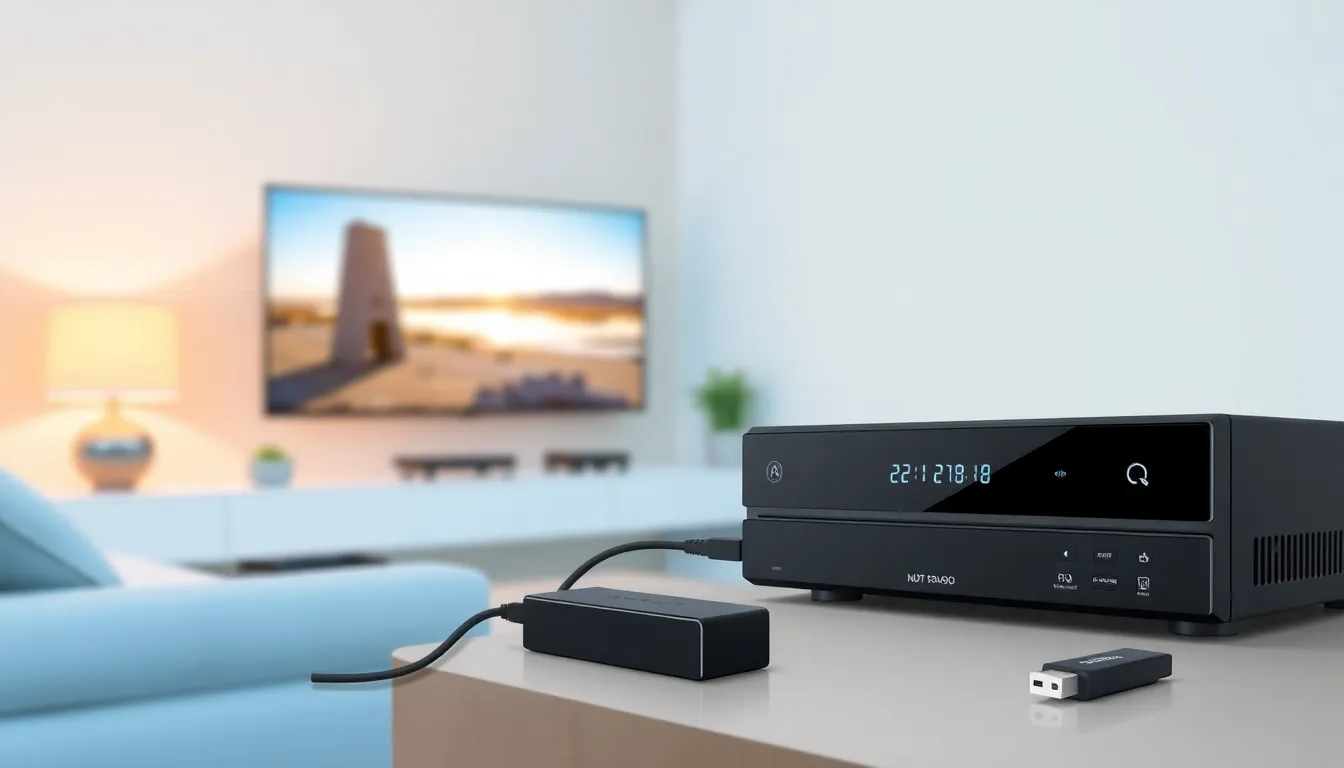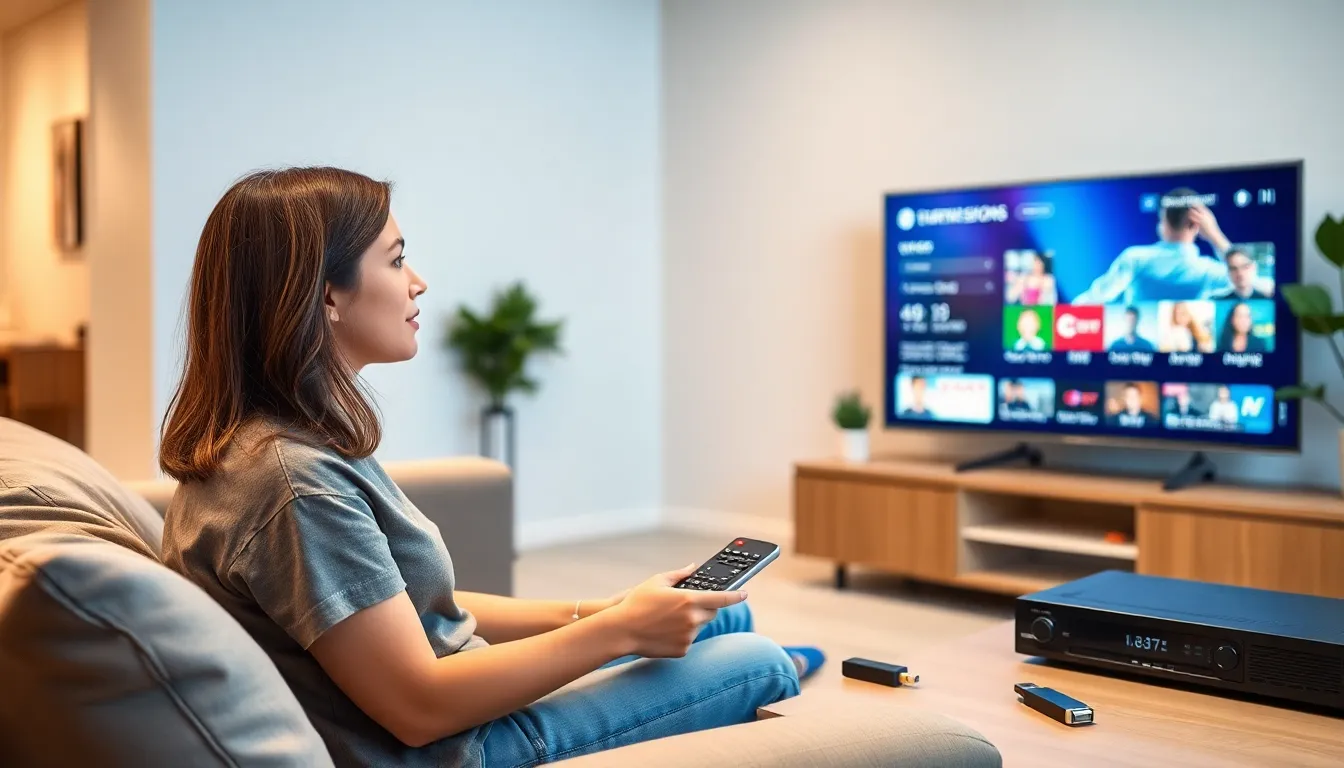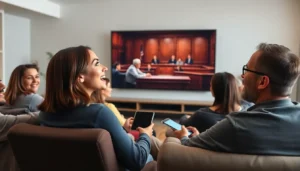Table of Contents
ToggleIn a world where binge-watching has become a competitive sport, knowing how to record streaming video on a smart TV is like having a secret weapon in your entertainment arsenal. Imagine this: you’re halfway through an epic series, and life throws a curveball. Fear not! With a few simple tricks, you can capture every plot twist and cliffhanger without missing a beat.
Understanding Streaming Video on Smart TVs
Streaming video on smart TVs involves delivering content directly over the internet, bypassing traditional cable or satellite connections. Many popular applications, including Netflix, Hulu, and Amazon Prime Video, provide a vast library of movies and series. With high-definition capabilities, these platforms enhance viewing experiences, allowing for binge-watching sessions.
Smart TVs connect to Wi-Fi networks, providing easy access to streaming services. Most models feature built-in applications, eliminating the need for additional devices. An intuitive interface showcases available content, allowing users to navigate through categories effortlessly. Many smart TVs also support voice commands, adding convenience for users.
Content streamed on smart TVs often includes features such as subtitles and multiple language options. Many platforms offer personalized recommendations based on viewing history, enhancing user engagement. Streamed content may vary by region, which can affect availability for certain shows and movies. With various subscription models, users can choose plans that best fit their viewing habits and budget.
Users often enjoy advanced features, such as 4K and HDR streaming, which improve picture quality. Some smart TVs allow for screen mirroring, letting viewers project content from mobile devices onto larger screens. Interactive features might also include live chats or social media integration during live events, enhancing the viewing experience.
Understanding these elements helps viewers utilize their smart TVs effectively. Streamlining access to diverse content ensures users can capture moments, regardless of interruptions. Familiarizing oneself with the functionalities of a smart TV enhances overall enjoyment and convenience in streaming video.
Required Equipment and Software

Recording streaming video on a smart TV requires specific equipment and software. Understanding these components simplifies the process and enhances the viewing experience.
External Devices
External devices play a crucial role in recording streaming content. Digital video recorders (DVRs) come equipped with features designed for seamless recording. Capture live content using a compatible USB flash drive connected to the TV’s USB port. HDMI capture devices also offer another option by connecting to both the smart TV and a computer, enabling recording of video streams. Streaming boxes such as Roku or Amazon Fire TV may also support recording functionalities through respective applications.
Dedicated Recording Software
Dedicated recording software provides versatility when capturing streaming content. Applications such as OBS Studio or Bandicam allow users to record their screen effectively. These tools run on computer systems connected to the smart TV. Features like customizable settings and high-definition recording enhance user experience. Some software may also enable direct upload to cloud storage services, providing easy access to recorded content. Always check the compatibility of software with your devices to ensure smooth functionality.
Steps to Record Streaming Video on Smart TV
Recording streaming video on a smart TV involves utilizing built-in features or external recorders. Both methods provide convenient ways to capture content.
Using Built-In Features
Many smart TVs come equipped with built-in recording features. Features vary by brand and model but often include a DVR function within the interface. Users can navigate to the streaming application, select the content, and access the record option directly. Some smart TVs allow scheduling of recordings, ensuring the capture of episodes even when not watched live. Checking the user manual provides guidance specific to each device, enabling users to maximize the built-in options available.
Utilizing External Recorders
External recorders offer an alternative for capturing streaming video. These devices include digital video recorders (DVRs) that connect to the TV via HDMI. Users may find HDMI capture devices effective for this purpose. USB flash drives are another option for direct saving of content when supported. Various streaming boxes, like Roku or Amazon Fire TV, may enhance recording capabilities by integrating with external devices. Each method provides flexibility and expands the options for users looking to save their favorite shows.
Legal Considerations
Recording streaming video on a smart TV raises various legal concerns that users must understand. Copyright laws govern the distribution and reproduction of digital content. Engaging in practices that violate these laws can lead to serious legal implications.
Users must be aware that most streaming services prohibit downloading or recording content for personal use. Terms of service from providers like Netflix or Hulu clearly outline restrictions on recorded content. Violating these terms may result in account suspension or termination.
Fair use doctrine allows limited use of copyrighted material without permission. Exceptions exist for educational, commentary, or criticism purposes. Such uses require a careful analysis of each specific situation.
Viewers should consider regional laws that may influence the legality of recording methods. Privacy laws can vary significantly by state or country. Understanding these regulations is essential for compliant recording practices.
Certain devices, like DVRs or capture cards, might offer features that enhance recording capabilities. Utilizing such devices doesn’t automatically make recording legal. It’s crucial to confirm compliance with both device manufacturers and content providers.
Checking for disclaimers before recording content ensures better adherence to legal boundaries. Some services might offer clarifications regarding allowed recording methods. Being informed enhances responsible usage and helps avoid potential legal issues.
Consulting legal professionals regarding specific cases is advisable. Obtaining expert advice can clarify the gray areas of copyright law. Individuals can proactively protect themselves from potential legal repercussions.
Recording streaming video on a smart TV opens up a world of convenience for viewers. With the right tools and knowledge, capturing favorite shows and movies becomes an effortless task. Whether using built-in features or external devices, users can ensure they never miss a moment of their beloved content.
However, it’s crucial to navigate the legal landscape surrounding content recording. Understanding copyright laws and the terms of service for streaming platforms helps avoid potential pitfalls. By staying informed and using the appropriate methods, viewers can enjoy their streaming experiences while respecting legal boundaries. Embracing these practices enhances the overall enjoyment of smart TV technology.




